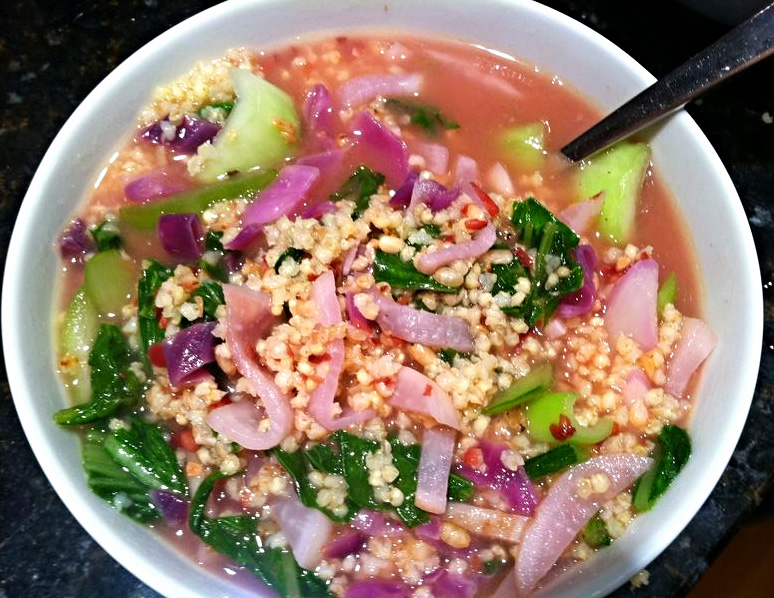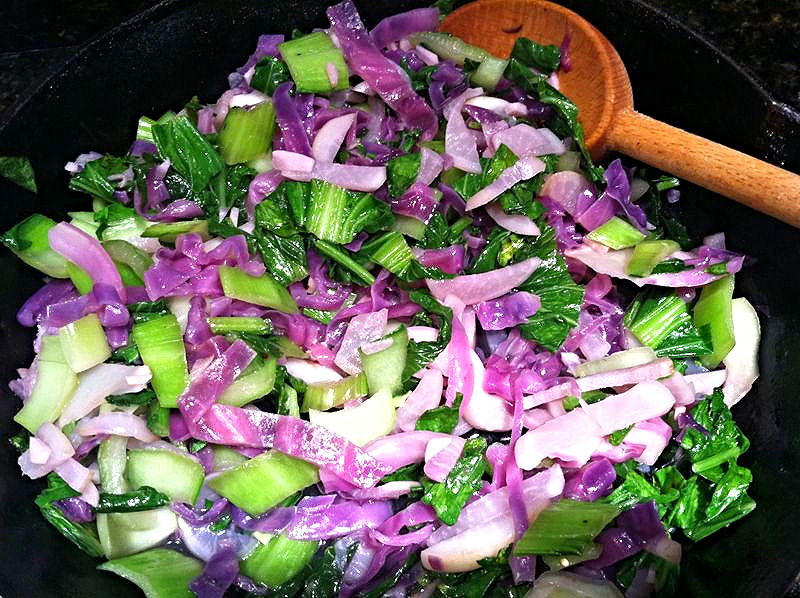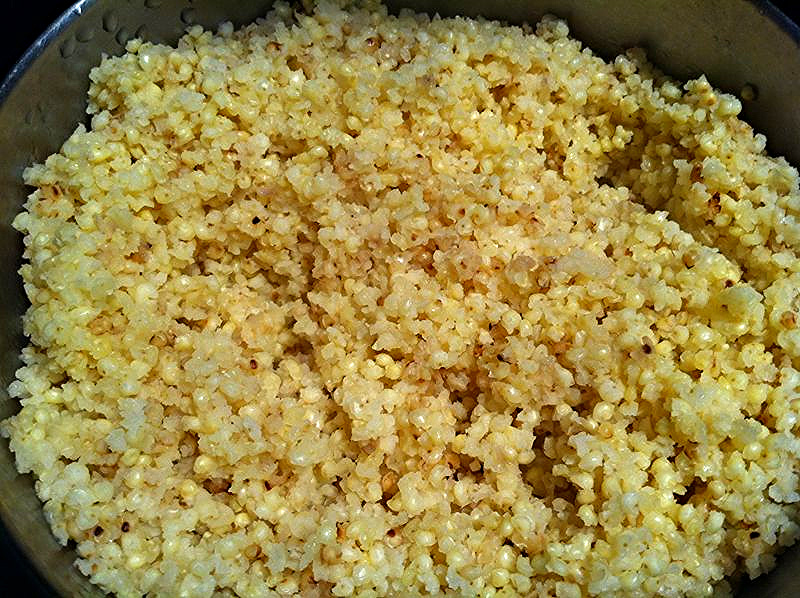
What better way to take care of your body after a holiday weekend of indulgence than by feeding yourself nourishing foods? One of my favorite healing powerhouse foods is miso soup. Miso is made from fermented soybeans, so it boasts all the nutritional benefits of fermented foods (probiotics, enzymes, vitamins etc.). This method for making miso soup is similar to a paint-by-numbers activity – you select your grain, your vegetables, your miso, and combine them all with water at the end. This keeps the live probiotics and enzymes in tact, allows for lots of flavor variance, and results in delicious soup every time!
Healing Miso Soup Ingredients (serves 2):
1/2 cup whole grain – brown rice, millet, quinoa, barley etc.
2 cups leafy greens (kale, chard, collards, spinach etc.), rinsed and chopped
1 cup red cabbage, rinsed and chopped
1 cup crunchy vegetable (carrot, diakon radish, turnip, beets etc.), rinsed and chopped
3 cloves garlic, peeled and minced
1/2 inch piece of fresh ginger, peeled and minced
1 teaspoon olive oil
1 heaping tablespoon of miso per bowl of soup
Hot water for each bowl of soup
Optional – 1/4 cup sauerkraut per bowl of soup; hot sauce

The trick with this soup is to be open to improvisation. You can use virtually any vegetables and grains you like and it will come out tasting good. I often use this dish as a way to use up whatever is looking a bit peaked in my crisper drawer. My rule of thumb is to use at least three different vegetables per batch, always include greens, and to select different colored veggies if possible.
Begin your soup by starting a pot of your chosen grain. I like to add some homemade stock to the water to add more flavor, as well as arame seaweed (loads of minerals!) and an astragalus root (immune-boosting herb). Add whatever flavorings you’d like and leave the pot to simmer.
While the grains are cooking saute your vegetables with olive oil, garlic, and ginger for 5 – 7 minutes and leave them in the pan to rest until the rest of the soup is ready to eat.

Because miso is a live fermented culture it shouldn’t be boiled. If boiled, it will loose its natural probiotics and digestive enzymes, which is half the reason you’re eating it in the first place. Instead, add a heaping teaspoon of miso paste to each soup bowl, keeping it off the stove entirely and away from excess heat. You’re going to build each bowl of soup individually on top of the miso.
I am WILD about South River miso (especially the azuki bean and brown rice varieties), but any miso paste will work.

As your grain is nearing the end of its cooking time (this will change depending on which grain you’re using) turn on your teakettle with fresh water. Let it come to a boil and then take it off the heat. Now it’s time to assemble your bowls of soup! Add a scoop of cooked grains and a scoop of sauteed vegetables on top of your miso paste. Fill the remaining space in the bowl with the hot water from the kettle and start mixing. You can also add some fresh sauerkraut and/or hot sauce if you’d like.
Eat, enjoy, and feel yourself being nourished from the inside out.

Leave a Reply